When looking to bring Asian Zen interior design into your home, what are the best ways to master the look with authority? To get you inspired, we’re looking at effective ways to make the interior design style work for your home. From what to source, to what to celebrate, here’s everything to know.
What exactly is Zen?
The word Zen is the Japanese pronunciation of the Chinese term ‘Ch’an’ which in its turn is actually the Chinese way of pronouncing ‘Dhyana’, the Sanskrit word for the concept of meditation.
Nowadays, the term Zen is used to describe a state of self-awareness of our place in the universe as well as being at peace with our thoughts.
So, what is Asian Zen interior design?
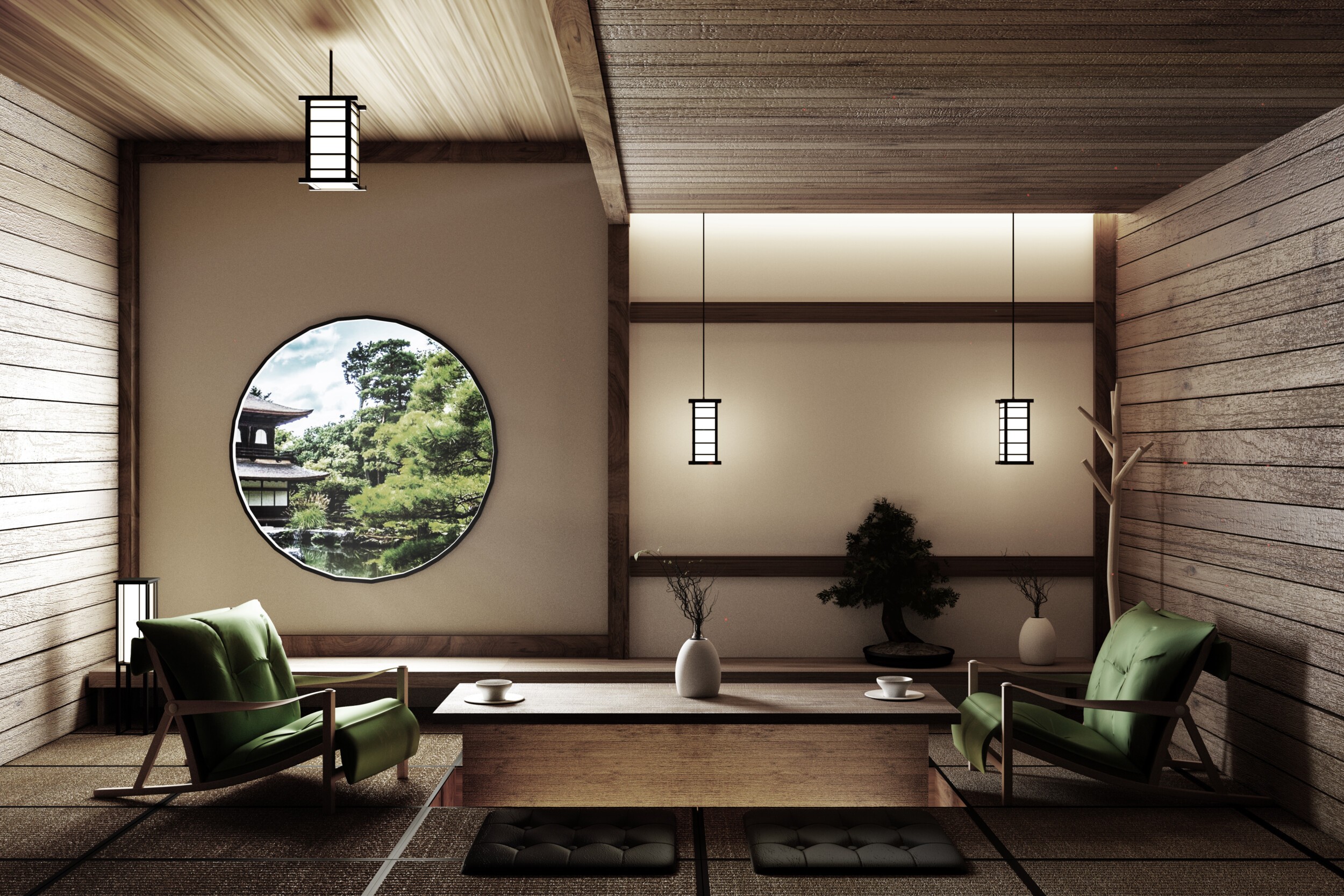
Asian Zen interior design is a style that focuses on emphasizing a sense of harmony, balance, tranquility, and simplicity in your home.
It draws inspiration from both the concept of Zen and the importance of incorporating nature into your décor, often found in Asian homes.
The result is a unique interior style that’s simple and minimal but also features rich layers.
What you’ll love about Asian Zen interiors:
- While discarding a few items might seem hard at first, incorporating this more minimalist style will allow you to make the most of a clutter-free home (and life!)
- You’ll feel relaxed and tranquil in what probably used to be a busier and messier setting
- You’ll create a stronger connection to nature
How to create the most relaxing Asian Zen interiors
Before focusing on the characteristic features of Asian Zen interiors, there’s an important point that we want you to keep in mind.
Sure, certain colors and motifs can help you reinforce this style, but don’t forget that at the very core of Zen décor is a sense of tranquility rather than specific features.
That’s why we recommend prioritizing what works for you personally when it comes to inspiring a sense of peace and balance.
Choose a natural palette…
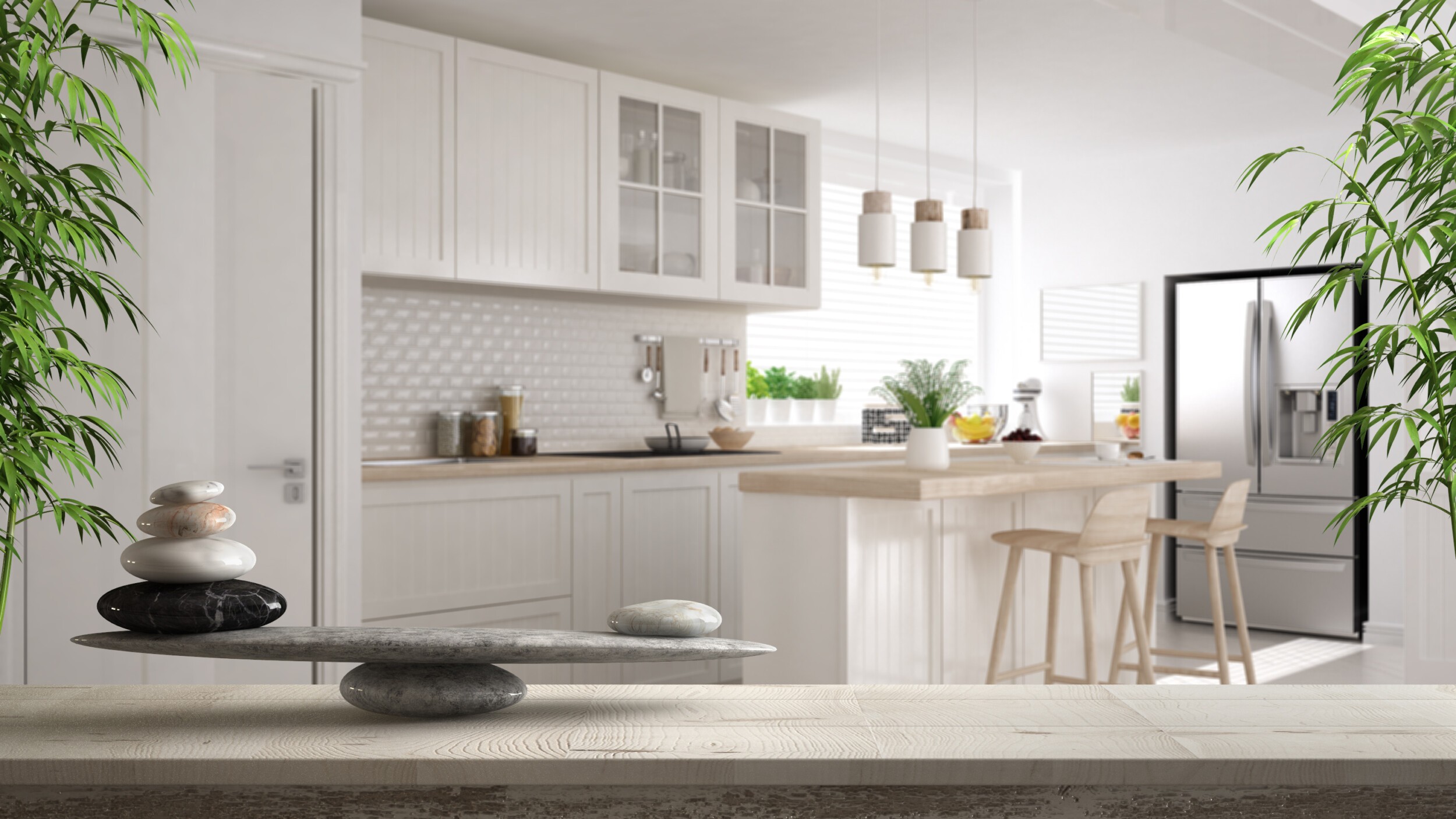
As you know by now, nature is central to Asian Zen interiors, and it is so in many ways. The most obvious one is the fact that Zen palettes usually revolve around natural colors.
To enhance this style’s sense of calmness, we recommend choosing the most neutral and natural hues in the softest tones for your primary and secondary colors, like white, different shades of beige, or grey.
As for accents, some popular options are… well, still natural colors, of course, but in bolder hues (for example, green, yellow, orange, and blue).
… and natural fabrics
Another Zen way of celebrating your connection to nature is to choose natural textiles over impersonal synthetic options. That way, you’ll also reinforce their sense of comfortable lightness and coziness that can help you feel more relaxed at home.
Some popular Zen fabrics are linen, cotton, and wool, and you can incorporate them in several ways, from your largest curtains to the smallest throw pillows.
… and actual natural elements
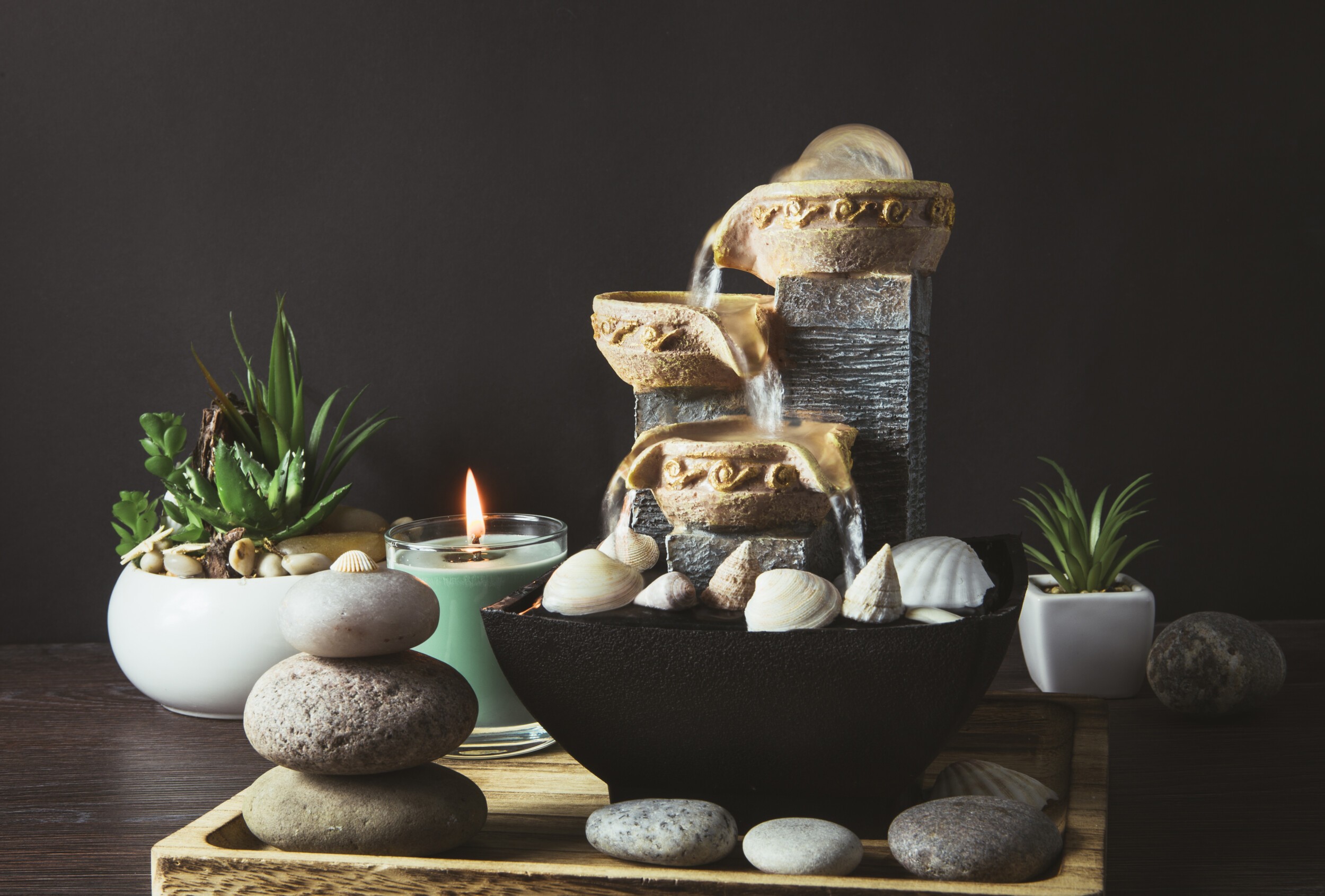
While high-maintenance flowers that can distract you with their scents aren’t particularly popular with Asian Zen interiors, plants are key.
They’re extremely important for this style thanks to their calming effect, both because they provide oxygen and because they can reinforce your palette with soothing greens.
Some of the most popular species that you can choose from to add to this Zen feel are bonsai trees, bamboo, snake grass, and the dracaena plant.
But plants aren’t the only way to bring nature inside your Asian Zen interiors!
In fact, rocks or pebbles and water features can also help you relax while feeling connected to the outdoor world. Even better? Combine them by creating your own rock garden, either indoors or next to your patio area.
If you haven’t got enough room for one, you can still opt for a smaller sand or gravel raking table instead. Raking patterns and lines into sand is a famous Zen habit to bring some peace and clarity whenever you feel like you can’t control your worries.
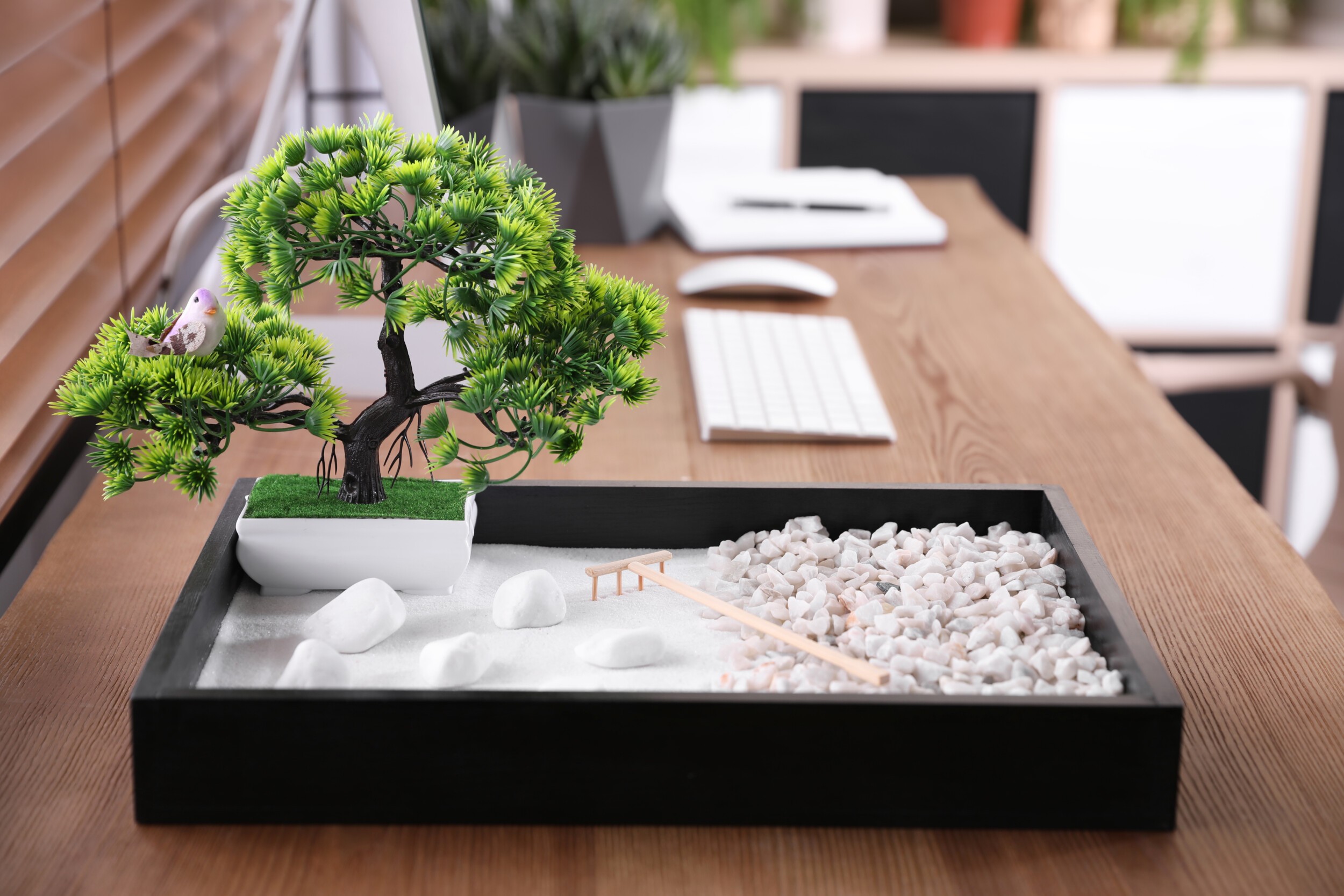
The importance of light
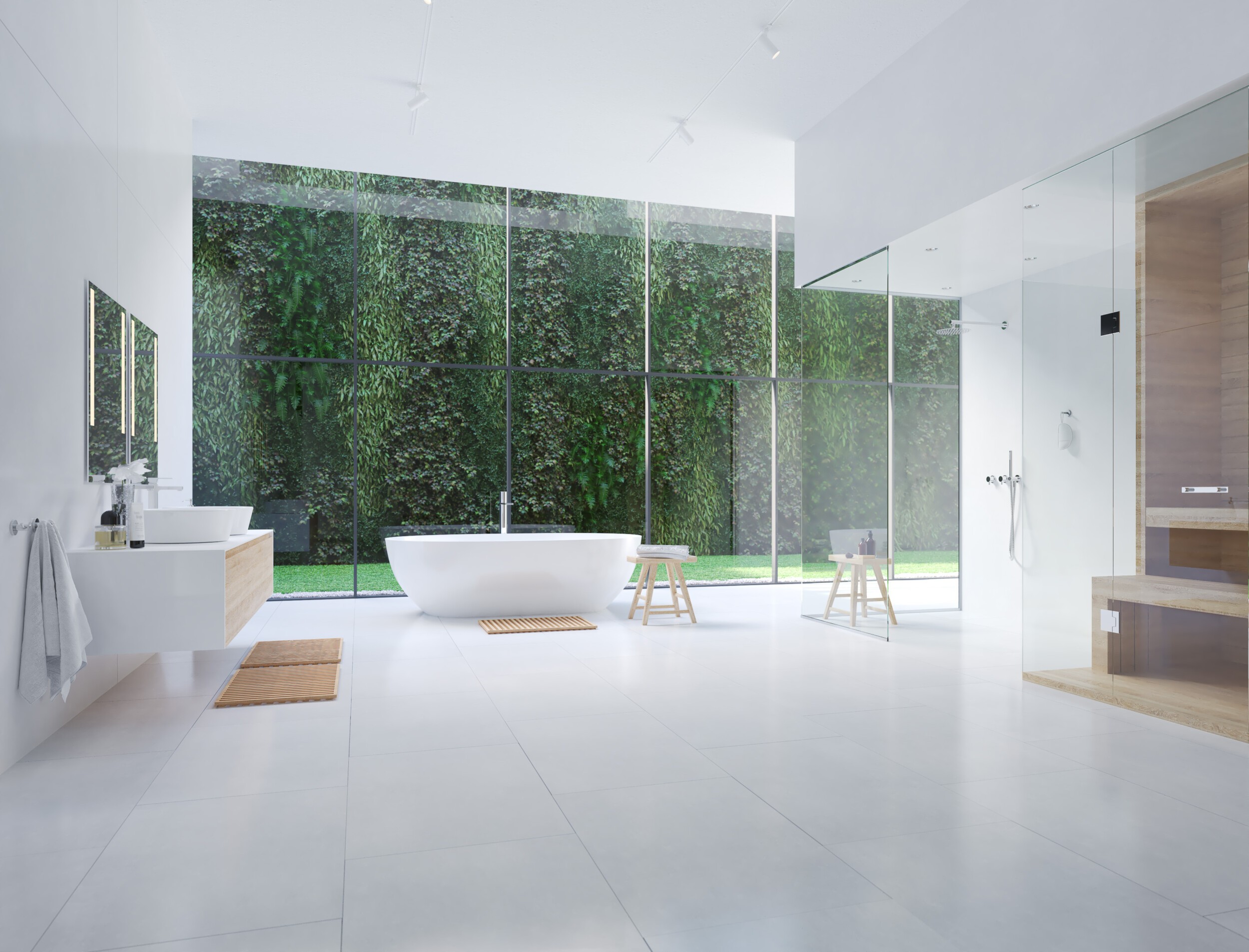
Forget about the brightest fluorescent overhead lights! Asian Zen interiors are all about celebrating natural sunlight and smaller sources of light.
While large windows and wide open floors are key, we know that they aren’t always an option depending on the layout of your house.
If that’s the case, don’t worry: you can still focus on several smaller lights so that you can control their intensity and achieve different ambiances depending on your needs and mood.
For example, some typical Asian Zen lighting fixtures and ideas are:
- Floor lamps
- Small table lamps
- Japanese lanterns
- Candles
When it comes to curtains, there are two main takes on Zen décor: you can either choose thicker models to create a sense of intimacy while reducing outdoor noise (this is especially clever if you live in a loud area in the city) or go in the opposite direction with some see-through sheer curtains that emphasize the element of light.
Keep your Asian Zen home minimalist
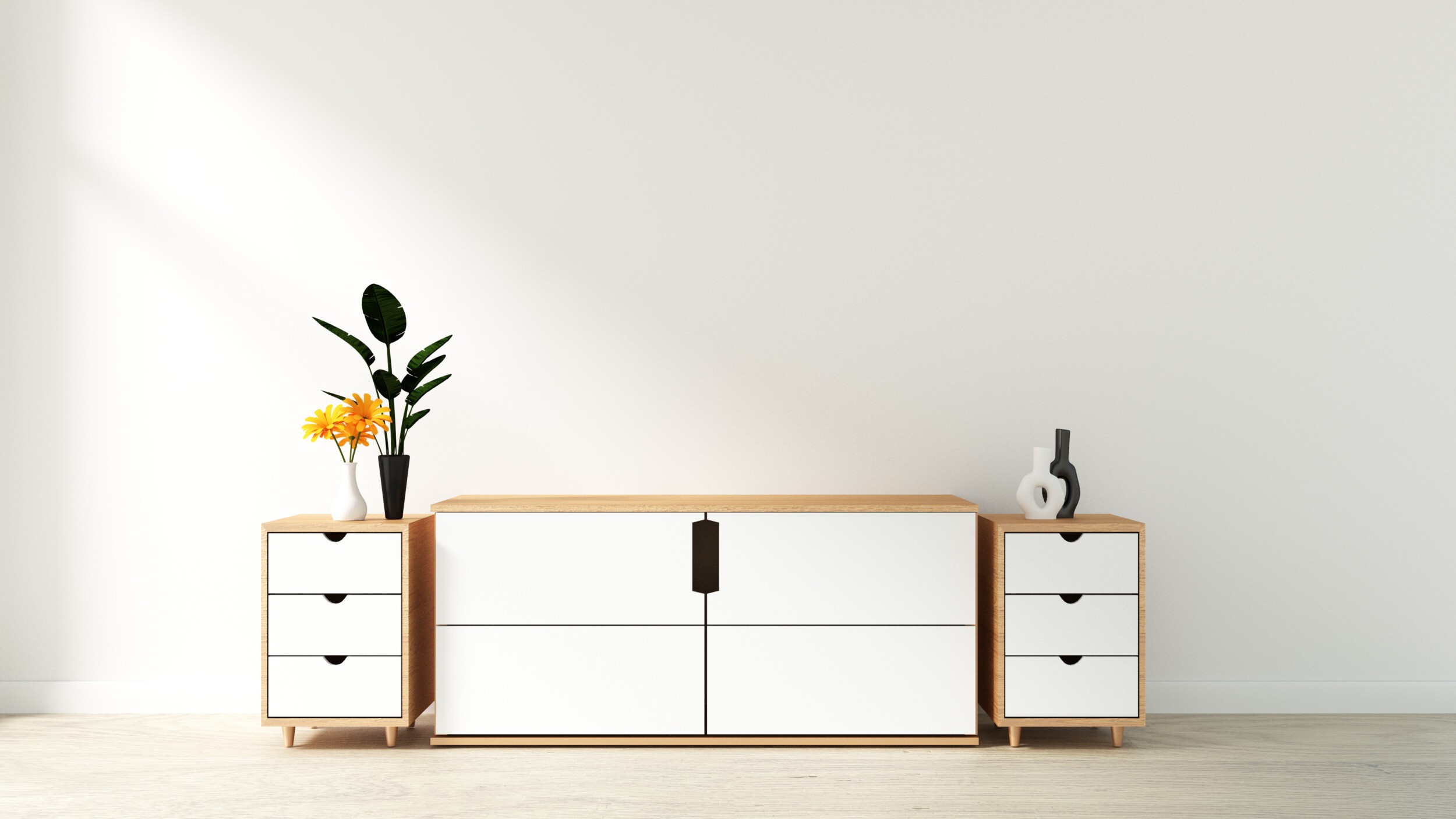
Asian Zen interiors are also rather minimalist. After all, how can you focus on tranquility and balance if you’re surrounded and distracted by clutter?
That’s why we thoroughly recommend starting your Asian Zen journey with a meaningful declutter.
This doesn’t mean that you must get rid of all your pictures and decorative items, but rather that you should consider keeping only the ones that have a special meaning or are truly dear to you.
Like Marie Kondo says, go through each of your objects and ask yourself whether or not it sparks joy.
If it doesn’t, it probably doesn’t belong in your minimalist Zen home.
Choose streamlined furniture
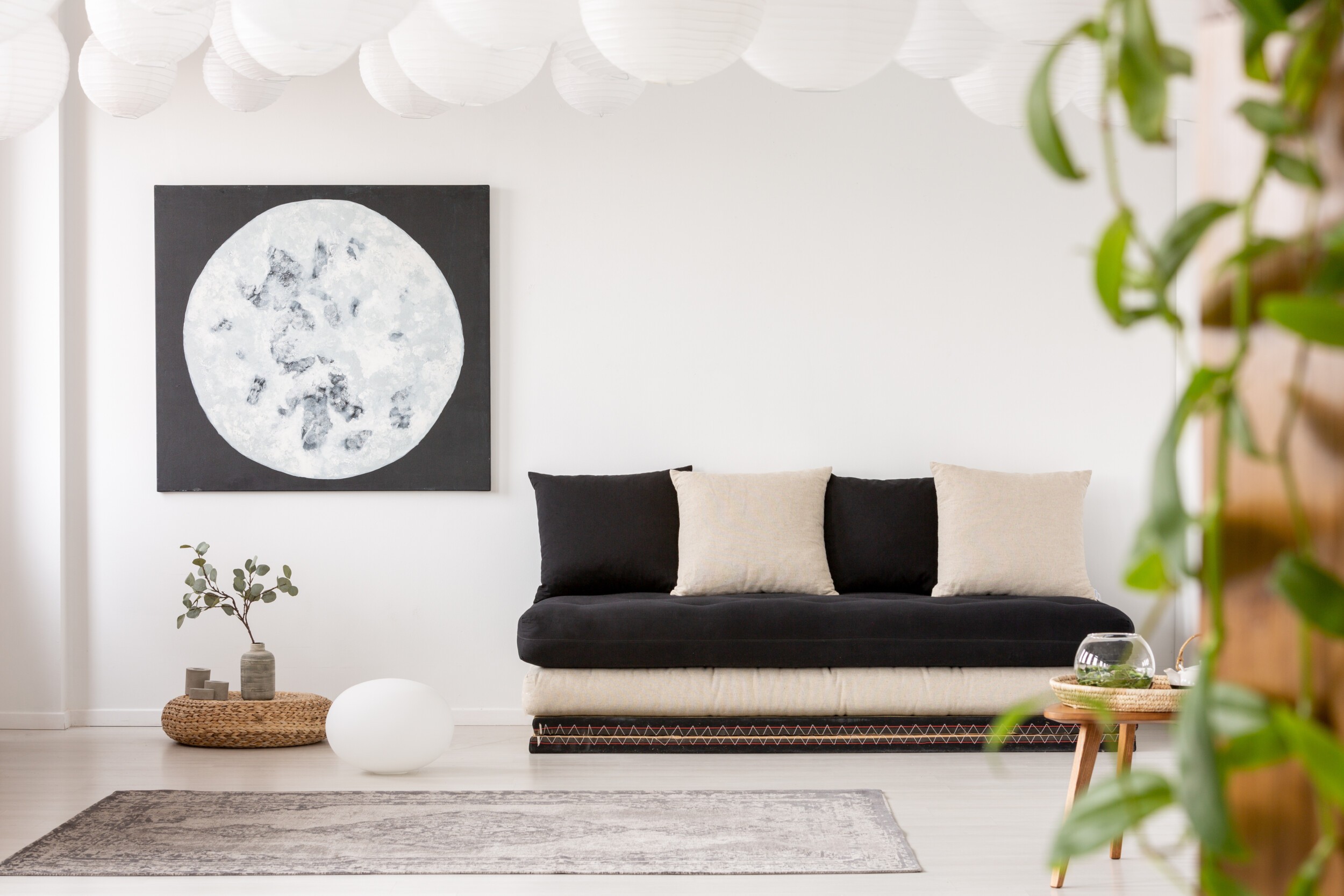
Another way of maintaining this minimalist feel while avoiding a cluttered look is to stick to furniture with clear and simple lines.
Try avoiding ornate and distracting details. Instead, prioritize fewer but higher-quality pieces made of wood or other natural materials.
To further reinforce this sense of balance, look for Japanese-style low-to-ground furniture, an immediate giveaway of Asian Zen interiors. It’ll help you maintain your room’s visual flow without interruptions while encouraging you to feel more grounded.
For example, it won’t come as a surprise that the type of bed that’s most popular in Zen homes is the iconic platform bed.
Think barefoot
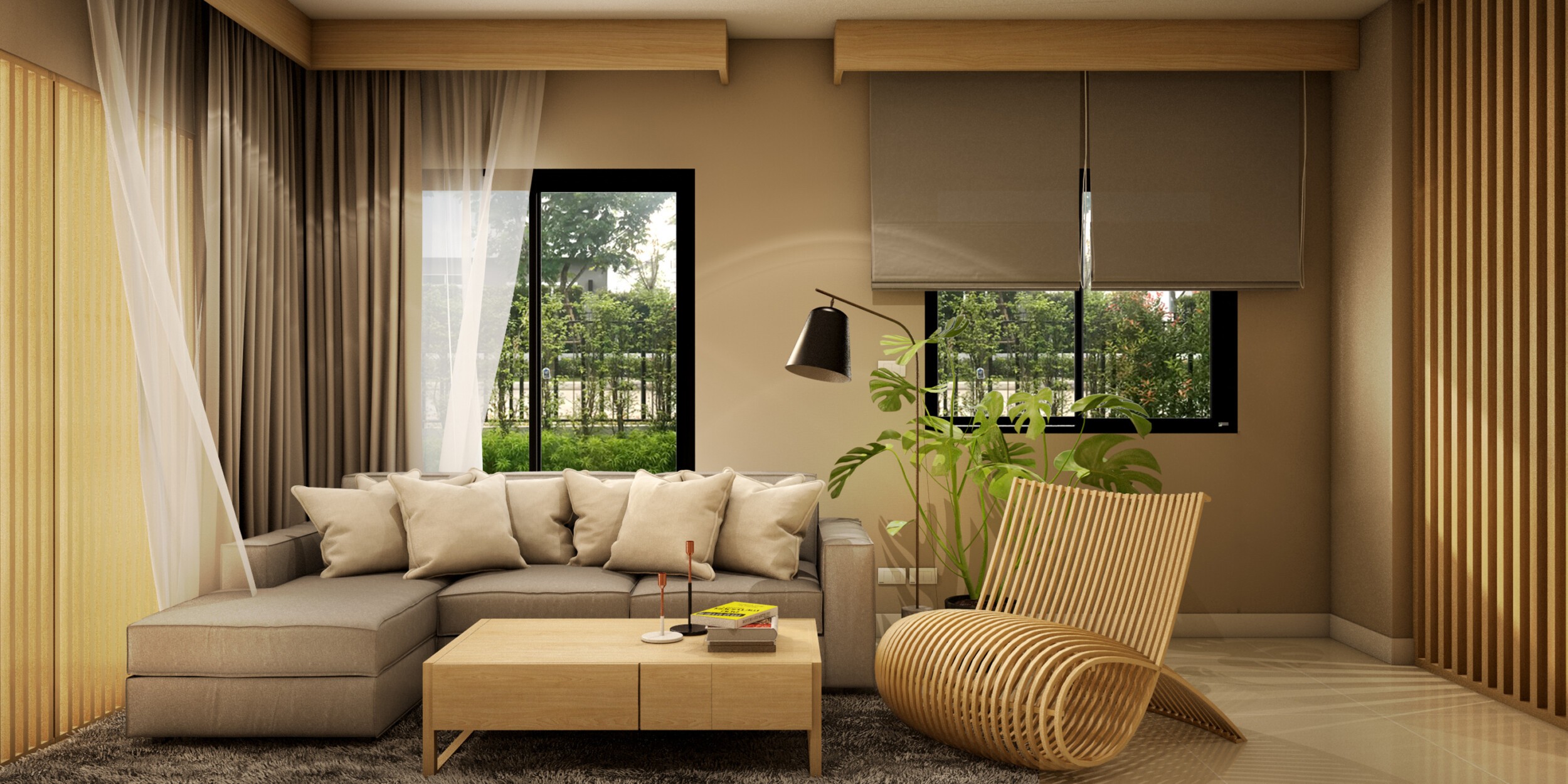
Walking barefoot can help you feel more grounded and connected to nature, even when you’re indoors.
That’s why it wouldn’t be a bad idea to choose flooring solutions that encourage you to do that… without slipping.
For example, consider wooden parquet, a resin floor finish, or a neutral carpet.
If you’re not up for redoing your entire floor, you can decide to experiment with a few natural rugs (especially when made of pure cotton, soft wool, or straw) to add to this sense of comfort.
Signature elements of Asian Zen interiors
By now you know that a true Asian Zen home should focus on achieving the right sense of balance and tranquility for those who dwell in it rather than follow specific trends.
However, if you were looking for some more tangible inspiration, here’s a little recap of the most distinctive Asian Zen elements (and a few additional ones):
- Sliding doors
- Platform beds and other types of low furniture
- Screens and room dividers to create special zones
- Plants
- A rock garden and/or a sank raking table



